Elasticity vs Scalability in Cloud Computing: What’s the Difference?
In this elasticity vs scalability guide, we discuss the differences between scalability and elasticity, outline the tools for setting these systems up, and explain the differences between vertical, horizontal and diagonal scaling.
Elasticity and scalability both involve responding to changing demands in cloud infrastructure. Although these terms are somewhat similar and often used interchangeably, they have significant differences.
To sum up these differences between elasticity vs scalability, you could say that scalability is proactive while elasticity is reactive, but there’s more to it than that. Read on as we explore the differences and similarities between elasticity and scalability in detail.
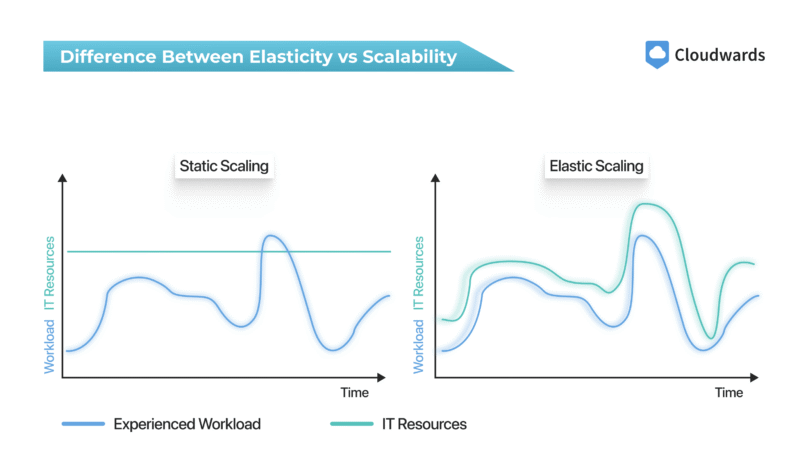
What Is Cloud Elasticity?
Cloud elasticity is the ability of cloud resources to dynamically adjust their capacity in response to sudden changes in your system’s workload demands. It indicates how well your resources automatically scale up and down to provide the computing power your workload needs in real time.
Cloud Elasticity Use Case Examples
Cloud elasticity comes in handy when trying to handle unexpected or periodic spikes in workload traffic. In other words, its use cases do not require permanent capacity changes. Let’s talk about some examples of cloud elasticity’s use cases.
- Streaming platforms: Viewer traffic on streaming platforms surges temporarily when there’s a new blockbuster or increased publicity around certain content. At such times, cloud elasticity solutions adjust computing power to ensure smooth playback and avoid physical service interruption.
- Black Friday sales: When e-commerce platforms have discounted sales events like Black Friday, their services typically experience a rise in visits, leading to higher computing needs. To ensure service availability, their cloud elasticity solutions will scale up and down as traffic fluctuates.
- Big data: When companies want to analyze big data using their regular data analysis systems, they can momentarily upscale resources using their elasticity tools and downscale when they’re done.
What Is Cloud Scalability?
Cloud scalability refers to your infrastructure’s ability to provision and scale down resources as demand changes. It indicates how much your resources can expand or contract, though this doesn’t necessarily happen in real time.
Cloud scalability can either be vertical or horizontal: Vertical scalability involves reconfiguring computing power to meet demand, while horizontal scalability involves adding more resource units such as servers.
Cloud Scalability Use Case Examples
Cloud scalability’s use cases are often long-term or permanent as the goal is usually to match future demands. Below, we’ll take a quick look at some examples of these use cases:
- Business expansion: When businesses expand their ventures or customer reach, they adjust their cloud resources’ scalability so that their system can handle the changes that come with increased customers or services. Think of it as the business tweaking the upper and lower limits of the regular capacity of their resources.
- Data storage: In a world that is increasingly data-driven, most organizations collect vast amounts of data. To ensure that their data pipelines aren’t interrupted, they set up scalable cloud storage systems.
- Disaster recovery: If an organization experiences a technical failure or any other disaster that takes them offline, they can recover and readily scale back to pre-disaster levels thanks to cloud scalability.
Vertical Scaling vs Horizontal Scaling vs Diagonal Scaling
As stated previously, cloud resources can scale vertically or horizontally, but there’s a third type of scaling called diagonal scaling. Below, we’ll examine how each type of scaling differs.
- Vertical scaling: Vertical scaling involves increasing or decreasing your cloud resources’ processing power to match demands. For example, to scale up vertically, you could upgrade from a 4GB RAM to an 8GB RAM. To scale down vertically, you could reconfigure a compute instance to two vCPUs from four vCPUs.
- Horizontal scaling: In horizontal scaling, instead of reconfiguring your resources’ specifications to match demand, you could simply add or remove resource units. For instance, you could go from 10 compute instances to 15 instances to handle demand, or scale back as needed.
- Diagonal scaling: Diagonal scaling combines horizontal scaling and vertical scaling. For example, if you want more computing power, you could go from 10 compute instances to 13 instances while increasing the RAM of each instance.
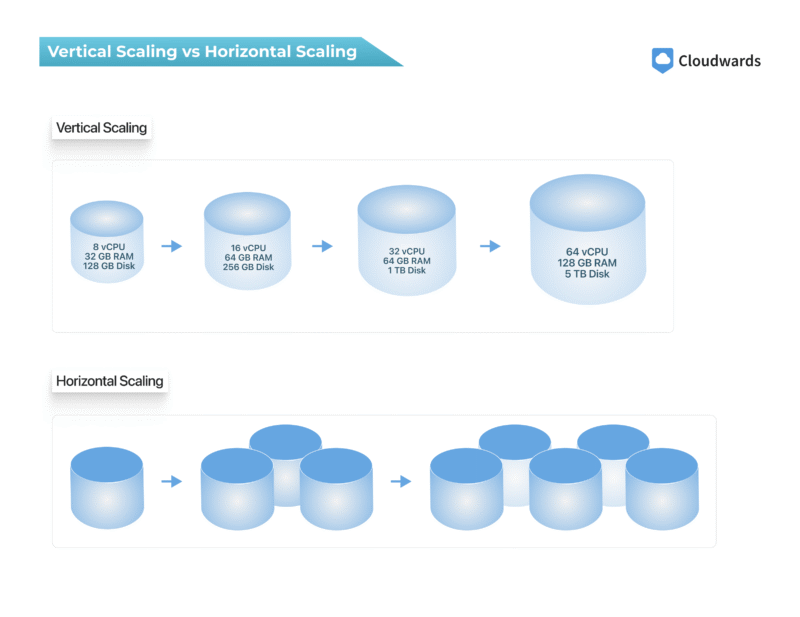
What’s the Difference Between Elasticity & Scalability?
Although elasticity and scalability both involve adjusting resources to match demand, they differ when it comes to factors like automation, cost, time and triggers. The table below provides further details on the differences between elasticity and scalability:
| Elasticity | Scalability | |
|---|---|---|
| Definition | Elasticity involves scaling resources based on real-time or unexpected changes in workload requirements. | Scalability involves scaling resources based on projected future workload requirements. |
| Use Cases | Elasticity deals with short bursts and unexpected fluctuations in compute requirements. | Scalability deals with long-term goals and forecasts. |
| Flexibility | Elasticity handles real-time changes, making it dynamic. | Scalability is often long-term or permanent, making it relatively less dynamic. |
| Automation | Elasticity often involves a high level of automation to ensure instant responses to changing demands. | Scalability involves manual intervention and some automation, but is typically less automated. |
| Triggers | Elasticity solutions are often triggered by predefined thresholds such as CPU usage and network traffic. | Scalability is typically triggered by factors such as business changes. |
| Indication | Elasticity indicates how well cloud infrastructure can handle unexpected spikes in resource usage. | Scalability defines how much the cloud infrastructure can expand or shrink with changing resource usage. |
| Reaction Time | Elasticity is a reaction to real-time changes that adjusts resources almost immediately. | Scalability often involves several steps and changes to existing architecture, so it takes more time. |
| Potential Costs | With elasticity, you incur extra expenses for momentary spikes in usage only. | Since scalability is long-term and involves changes to existing architecture, it generally costs more. |
| Wastage | Elasticity lowers the chance of wastage as extra resources are deprovisioned almost immediately when they are no longer needed. | After upscaling, if your projected workload increase falls short of the additional resources, you’ll incur losses due to wastage. |
| Interdependency | Elasticity isn’t possible without scalability. | You can have scalability without elasticity. |
Elasticity & Scalability Tools
Container orchestration, containerization, cloud autoscaling and Infrastructure-as-Code (IaC) tools play various roles to enable effective elasticity and scalability systems. Read on as we discuss these elasticity and scalability tools.
Containerization Tools
Containerization tools like Docker allow you to package software in a way that makes it readily reproducible across various platforms. With such tools, you can quickly deploy and run your software on the extra instances when you scale horizontally.
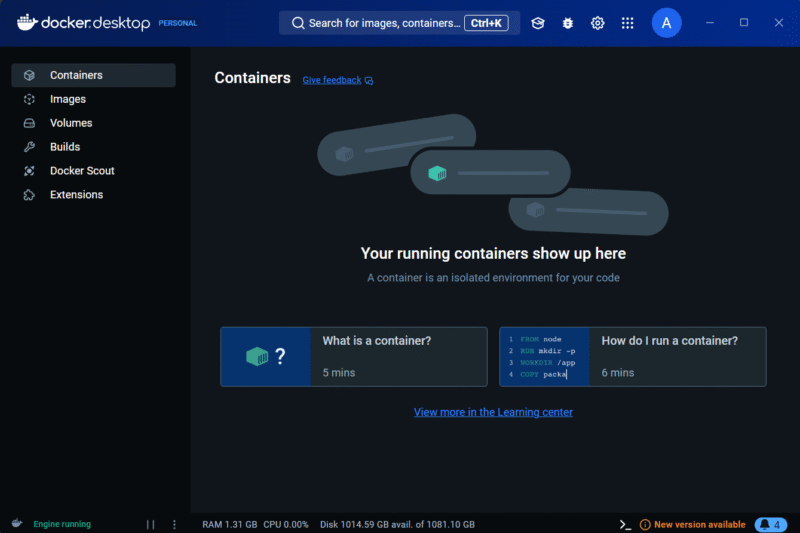
Container Orchestration Tools
Besides automating deployment and managing lifecycles, container orchestration tools scale the units in their environment. For example, Kubernetes offers horizontal pod autoscaling and Google Kubernetes Engine (GKE) supports vertical pod autoscaling.
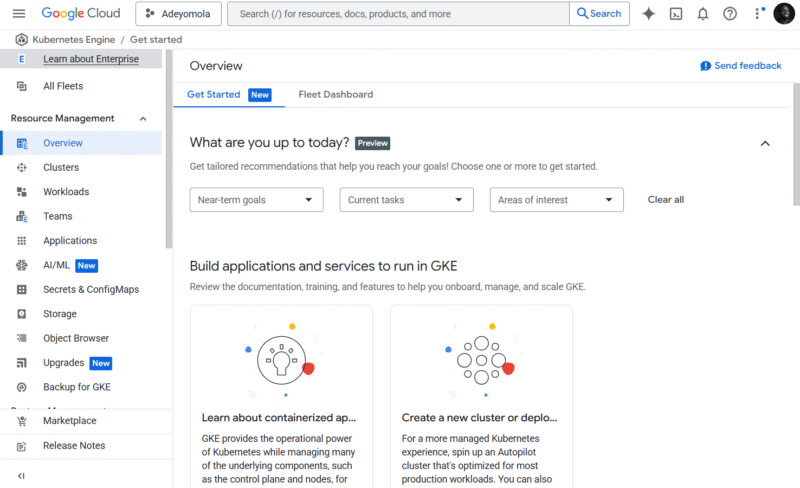
cluster while controlling your operations.
Cloud Autoscaling Tools
Autoscaling tools are quite common on cloud services. Amazon Web Services (AWS) offers tools like AWS Auto Scaling and Elastic Load Balancing, while Microsoft Azure has Autoscale (Azure Monitor) and Google Cloud provides Cloud Load Balancing.
Although load balancing tools are primarily used to ensure uniform traffic distribution across a fleet of instances, they also communicate with autoscalers to adjust the fleet size as needed.
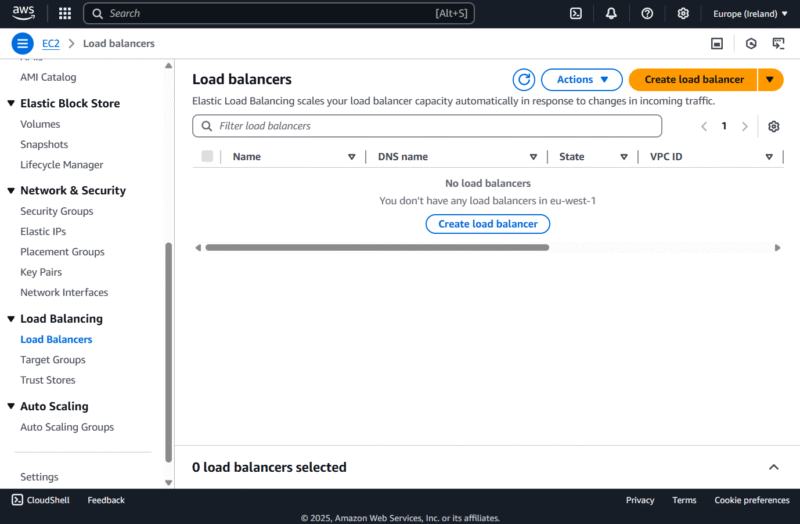
to the load from incoming server traffic.
Infrastructure-as-Code Tools
IAC tools aren’t directly involved in elasticity or scalability. Instead, they allow you or your autoscalers to readily provision and deprovision resources. With IAC tools like Terraform and Azure Resource Manager, you can define your infrastructure programmatically for easy reproducibility.
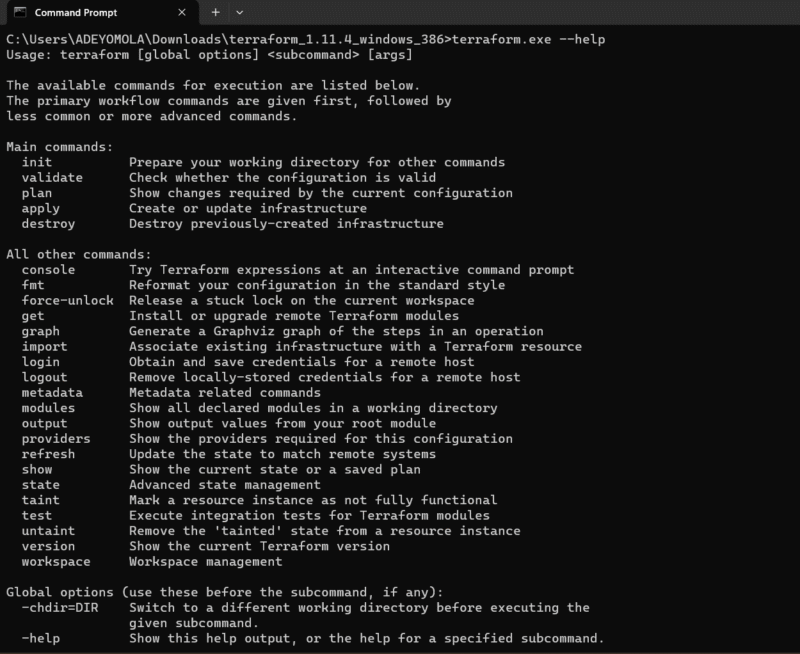
it works on various cloud platforms.
Final Thoughts
Scalability and elasticity both involve managing the size of your cloud resources to match the required capacity. While elasticity usually happens in the moment, scalability is often planned in advance, and it’s required for elasticity.
Having read all the way to this point, which do you think is more important: elasticity or scalability? In your opinion, how essential are container technologies for scalability and elasticity? Share your thoughts with us in the comments below. Thank you for reading.
FAQ: Scalability vs Elasticity Comparison
Scalability focuses on the upper and lower limits of your cloud capacity, while elasticity manages how well your infrastructure can scale within these limits.
Scalability defines your cloud resources’ capacity limits for expansion and contraction. Elasticity indicates how well your resources scale up and down in real time, and agility defines how quickly and effectively your cloud infrastructure adapts to changes by deploying new software.
Rapid elasticity is your cloud infrastructure’s ability to scale up or down almost instantly.


